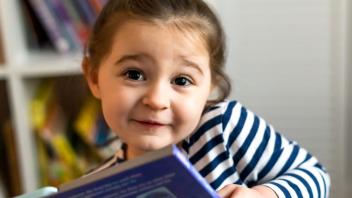I was reading a novel last night, a book called Tropical Secrets: Holocaust Refugees in Cuba by Margarita Engle (Holt). It’s a tough subject even for the target reader (12 years and older) as the title suggests.
The telling, however, is filled with beautiful images that somehow both soften and strengthen its power. Daniel, a Jewish refugee who is one of the voices, describes the music of Cuba as “…an entirely new/sort of music,/the sound of a future/dancing with the past.” (p. 108)
‘Dancing with the past’….how interesting it sounds. What does the future sound like? And even if I didn’t think about these things, I’d probably just enjoy the sound of the words; they kind of trip off the tongue.
Books for young children should also sound good. After all, these are books that should not only look good but sound good — even if young children don’t understand all of the words, it’s the sound of the language that can captivate.
There are books like Denise Fleming’s In the Small, Small Pond (Holt) in which a child witnesses seasonal goings-on like “lash, lunge, herons plunge.”
All of Baby, Nose To Toes by Victoria Adler (Dial) rhythmically describes the child such as “Baby’s got legs,/strong little legs…Caper and prance legs./Kick me in the pants legs…” The naming of familiar parts of the body is made lively and fun — all while celebrating the baby’s special place in the family.
Rhyming words are illustrated to make a humorous, short, but fun-sounding concept book (that also creates outrageously comical short stories with its lively illustrations) in Billy & Milly: Short & Silly by Eve Feldman (Putnam).
A pleasure that can last a lifetime, the pleasure in words — lovely words that sound good, feel good on the tongue, create powerful images — starts by introducing young children to a steady diet of rich language in books.

